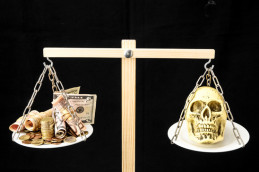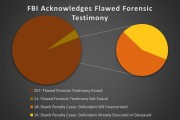How much longer will we have the death penalty?

The Supreme Court’s recent decision in Glossip vs. Gross to uphold Oklahoma’s lethal injection procedure after it took 43 minutes for inmate Clayton Lockett to die may have many supporters of the death penalty cheering, but the death penalty is dying a slow death. As a result of a growing number of death row exonerations and the legal and ethical qualms about supplying drugs for the specific purpose of killing people, all 32 remaining death penalty states are now struggling to obtain the necessary drugs needed to perform executions.
Nearly 40 years ago America resumed executions after a brief four year break when the practice was temporarily ruled illegal by the Supreme Court. On January 17, 1977, executions continued with the death of Gary Gilmore in Utah by firing squad. Since that day some 1,411 people have been executed in the US. Texas, a hard-core death penalty state, has carried out 527 of those 1,411 executions in the modern era of the practice. Texas currently carries out its executions using pentobarbital rather than the midazolam cocktail at issue is Glossip vs. Gross. But Texas is down to its last drop of pentobarbital. In April the Texas Department of Criminal Justice indicated it only had enough of the drug at that time to carry out four executions. And the American Pharmacists Association has encouraged its members not to supply drugs that could be used in executions. European suppliers of drugs used for execution have banned import into the United States if those drugs are to be used in carrying out a death sentence. Some states have even gone so far as to acquire the drugs “off the books” using petty cash as not to indicate where the drugs are going or how they are being used. Akorn, the company that makes midazolam, issued a statement early this year stating it does not want its drug used in executions and “will not sell any products directly to any prison or other correctional institution.” Utah has now resorted back to the firing squad.
Public opinion is also shifting. Nearly 20 years ago, 80 percent of Americans supported the death penalty compared to 63 percent today, according to a Gallup poll. And when given the choice between life without parole or the death penalty, today only 42 percent of Americans prefer the death penalty. Since 1973 at least 151 death row inmates have been exonerated with almost half of the exonerations coming since 2000. Nebraska is currently debating a law that would abolish the death penalty in favor of life without parole. Pennsylvania has instituted a statewide moratorium on the practice calling it “ineffective, unjust, and expensive.” And for all those critics out there that say that housing a prisoner for life is more expensive than the death penalty: housing death row inmates is twice as expensive as housing other types of prisoners and the cost of prosecuting capital cases has tripled in recent years. The Supreme Court continues to load conditions and obligations on both the prosecution and defense in death penalty cases. These standards from the Court invite endless appeals, expensive psychiatric evaluations, mitigation experts and juror consultants. An average death penalty case can cost approximately $2 million dollars leading fiscal conservatives to question the place of the death penalty in modern society.
With the drugs harder to obtain, the process more expensive than ever and public support declining, the death penalty is on the wane. In 2014, only 35 inmates were executed–the smallest number in two decades. The death penalty is dying a slow and painful death, much like the one Clayton Lockett endured at the hands of Oklahoma.



